Auctions
Sotheby’s Raked in $190 Million at Its Contemporary Art Double-Header, and Minted Several New Market Stars
María Berrío and Lisa Brice were among the many artists who set auction records at "The Now."
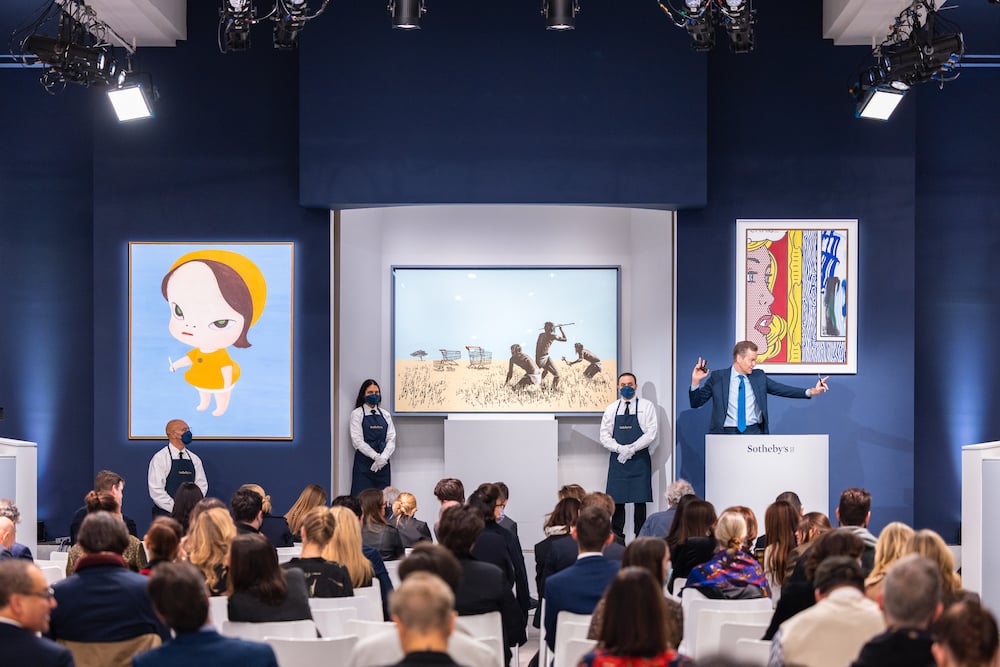
María Berrío and Lisa Brice were among the many artists who set auction records at "The Now."

Eileen Kinsella

Bidding soared at tonight’s contemporary art double-header at Sotheby’s, despite a less than packed saleroom.
The evening kicked off with “The Now,” a sale of art made primarily by artists a bit younger than those in the house’s main contemporary art sale that immediately followed. “The Now” also marked the first time the auction house accepted bids in cryptocurrency for a live auction. It was an unprecedented and sometimes confusing sight to behold auction veteran Oliver Barker, who headed the sale, navigating between bids in the millions of U.S. dollars (USD) and in thousands of Ether (ETH).
In the end, “The Now” was a “white-glove” sale, which means 100 percent of the lots sold. In all, it took in $71.8 million for 23 lots, compared with a presale estimate of $36.6 million to $53.2 million. Five of the lots, or about 20 percent of the sale, carried irrevocable bids and were guaranteed to sell.
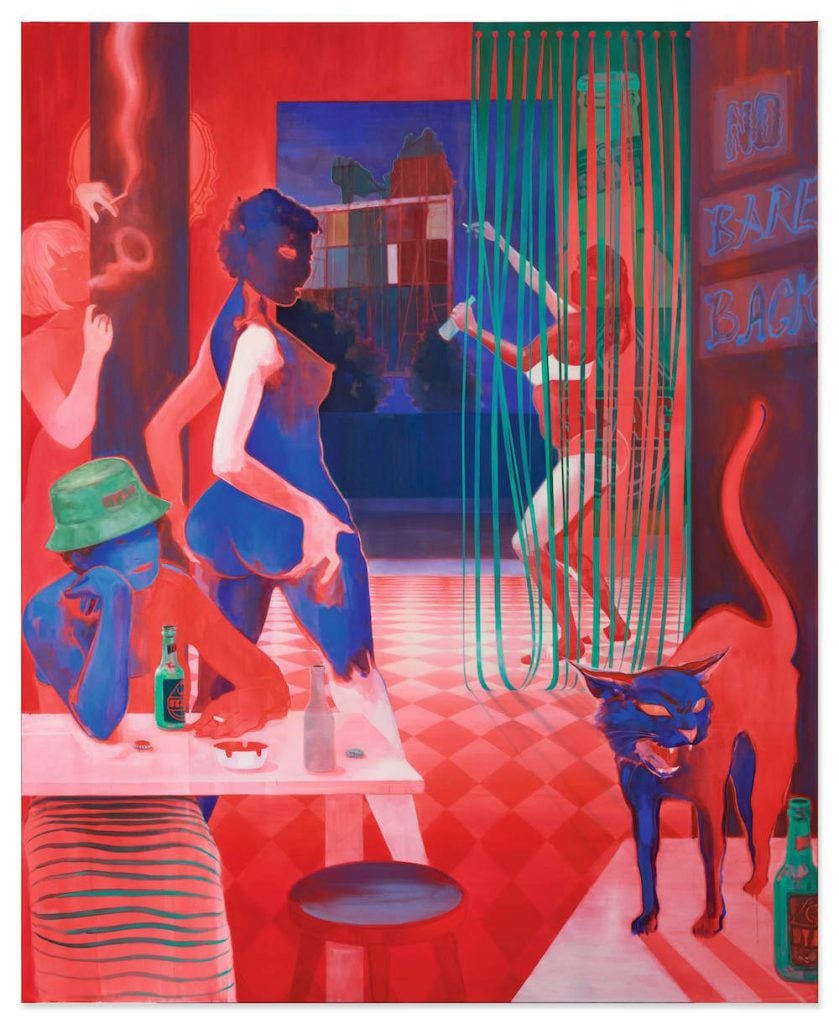
Lisa Brice, No Bare Back, after Embah (2017). Image courtesy Sotheby’s.
The event started off with a bang when Sotheby’s offered a painting of a colorful bar scene by Lisa Brice, a London-based artist from South Africa, No Bare Back, after Embah (2017). It breezed past its $200,000 to $300,000 estimate, as well as Brice’s former auction record of $34,487, to ultimately sell for $2.6 million ($3.2 million with premium) to a Sotheby’s specialist on the phone with a client.
The action was also intense for the next lot, if not quite as lofty, when a work by Colombian-born artist María Berrío came on the block. Flor (2013), estimated at $80,000 to $120,000, was the artist’s auction debut. After Barker opened bidding at $40,000, it leapt to a final bid of $750,000 from a buyer on the phone with Sotheby’s chairman Brooke Lampley ($927,500 with premium).
Nine records were set for other artists this evening, including Toyin Ojih Odutola, Hernan Bas, Stanley Whitney, Christina Quarles, Jordan Casteel, and Lukas Duwenhögger.
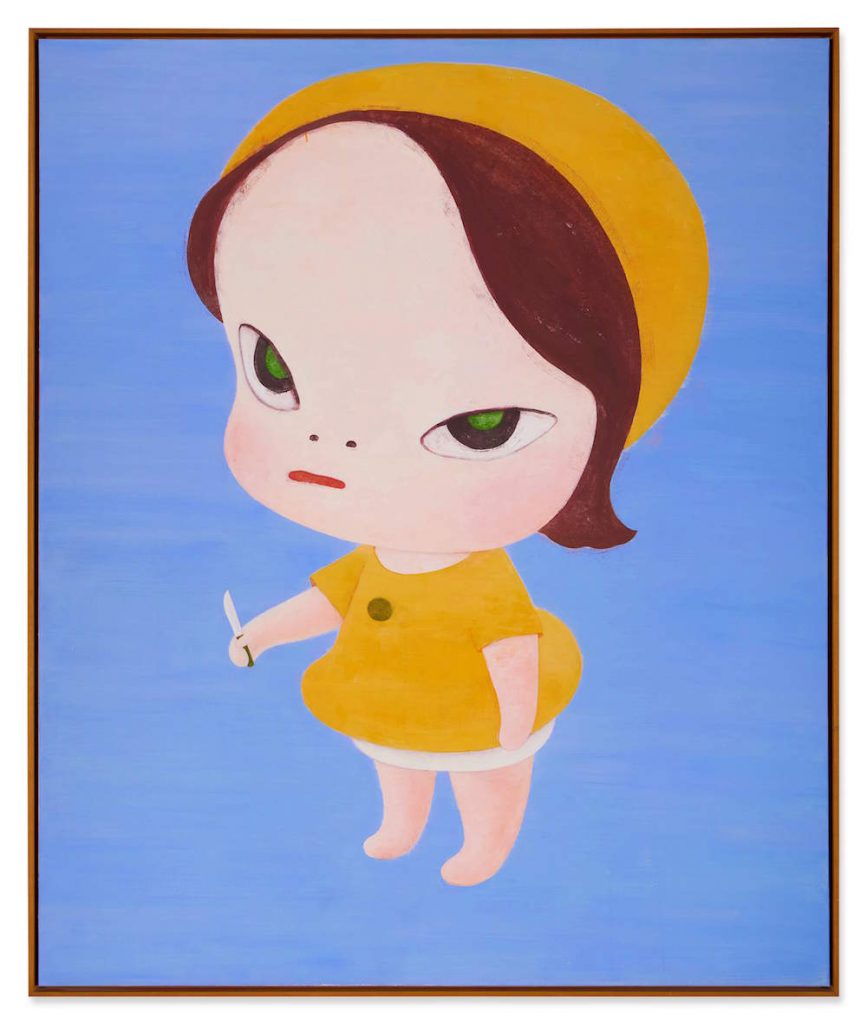
Yoshitomo Nara, Nice to See You Again (1996). Image courtesy Sotheby’s.
As expected, the top lot of the night for “The Now” sales was Yoshitomo Nara’s Nice to See You Again (1996), one of his quintessential depictions of a possibly threatening cartoonish girl with a giant eyes. It sold above expectations, for $13.2 million ($15.4 million with premium), to a bidder vying through a New York specialist and fighting off competition from Asia. It now ranks among the most expensive Nara works ever sold at auction. The current record is just under $25 million.
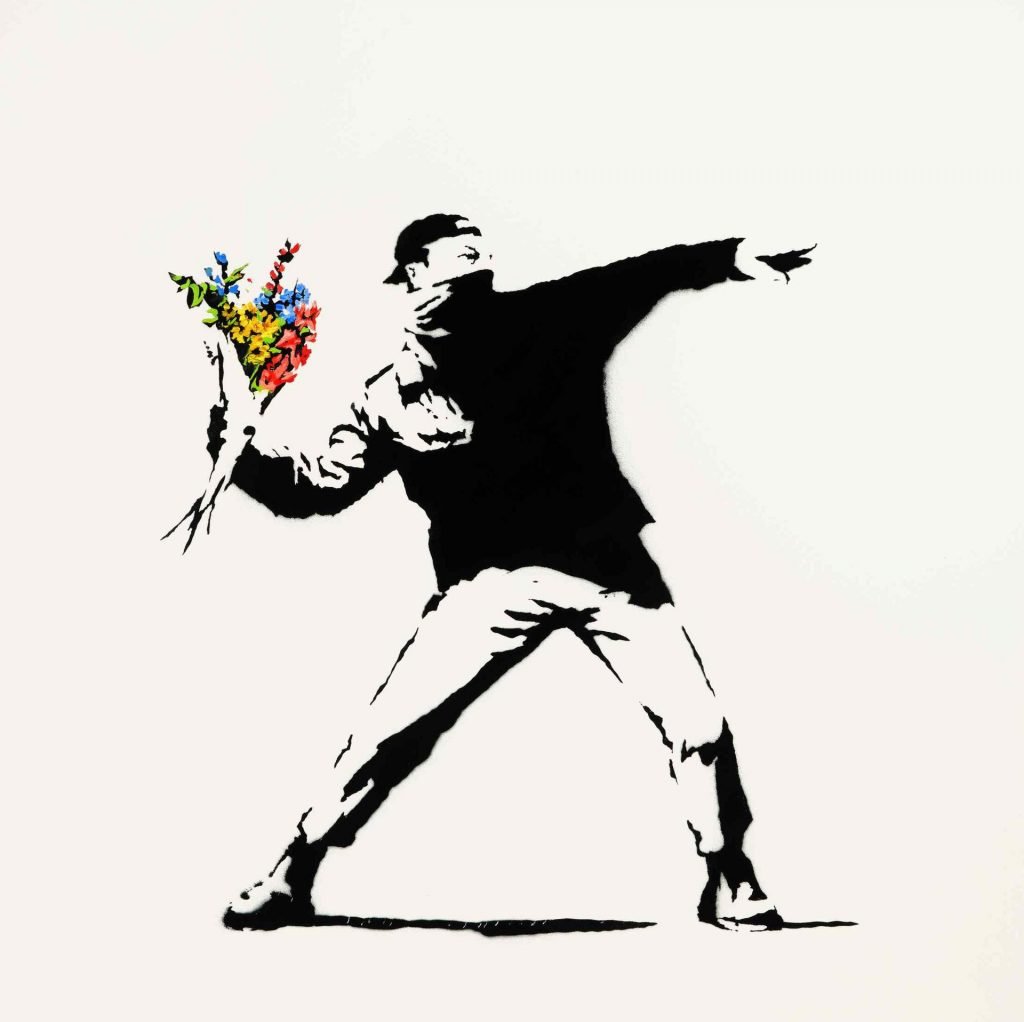
Banksy, Love is in the Air (2005). Image courtesy of Sotheby’s.
The Nara was followed by two Banksy lots, for which the house said it accepted bids in crypto for the first time, though it did not reveal which currency the winning bidders actually used. Love is in the Air (2006) sold for $6.7 million (the equivalent of 1,596 ETH), while Trolley Hunters (2006) sold for $5.6 million (1,397 ETH).
Right after that sale, the house’s main contemporary evening auction realized $119 million for the 34 lots it offered. (One, a Carl Andre aluminum square was withdrawn.) The total was well within earlier expectations of $89.2 million to $126.6 million.
Two of the 34 lots, including a major Jean-Michel Basquiat painting, Made in Japan II, estimated at $12 million to $18 million, failed to sell. Bidding opened at $10 million but got no higher than 11.5 million.
There were irrevocable bids on 11 of the lots, making roughly a third of the sale guaranteed to sell.
The highest-priced lot of the night was, again as expected, a Roy Lichtenstein painting, Two Paintings: Craig . . . (1983), which came from the collection of television executive Douglas Cramer and shows the American Pop artist revisiting two of his most popular motifs from the 1960s: the female form and Ben Day dots. It sold for $20.4 million over an estimate of $12 million to $18 million.
Bidding opened at $10 million before it was eventually hammered down to art dealer and Gagosian Gallery C.O.O. Andrew Fabricant, who fought off competition from several other Sotheby’s specialists on the phone banks.
The second-highest price of the evening went to an untitled 1995 abstract work by Christopher Wool, whose auction prices have been sinking lately. Estimated at $6 million to $8 million (and with a third-party guarantee), the work went well above that to hammer for $11.3 million to the phone bank in London ($13.2 million with premium), and so presumably did not go to the third-party backer.
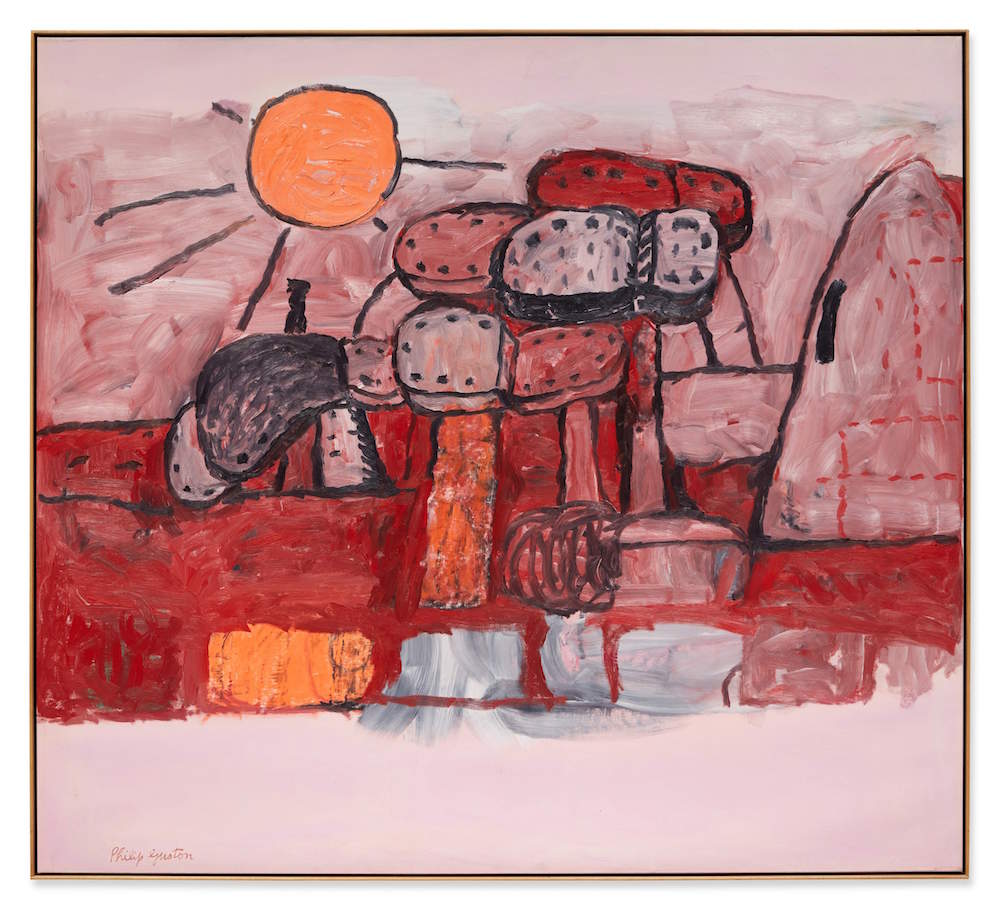
Philip Guston, Ominous Land (1972). Image courtesy Sotheby’s.
Philip Guston’s Ominous Land (1972) was another expected top lot, and another with a third-party guarantee. It sold for $9.5 million with premium on expectations of $6 million to $8 million.
Painter Cecily Brown was a star of the night with her signature works sparking, in some cases, protracted bidding wars. That was the case for Spree (1999), which was estimated at $3 million to $4 million, but was bid up in $100,000 increments between two tenacious buyers, one on the phone and the other seated in the room. Every time it seemed like one was about to relent, the other jumped back in. The final price was $6.4 million with premium.
Similarly, Bend Sinister, (2002) which carried a Sotheby’s guarantee, shrugged off any hint of weakness and soared to a final price of $6.3 million on an estimate of $800,000 to $1.2 million, following a bidding battle between Sotheby’s specialist David Galperin and an online bidder who eventually won it on a hammer price of $5.3 million. Both works of those works also came from the collection of Douglas Cramer.